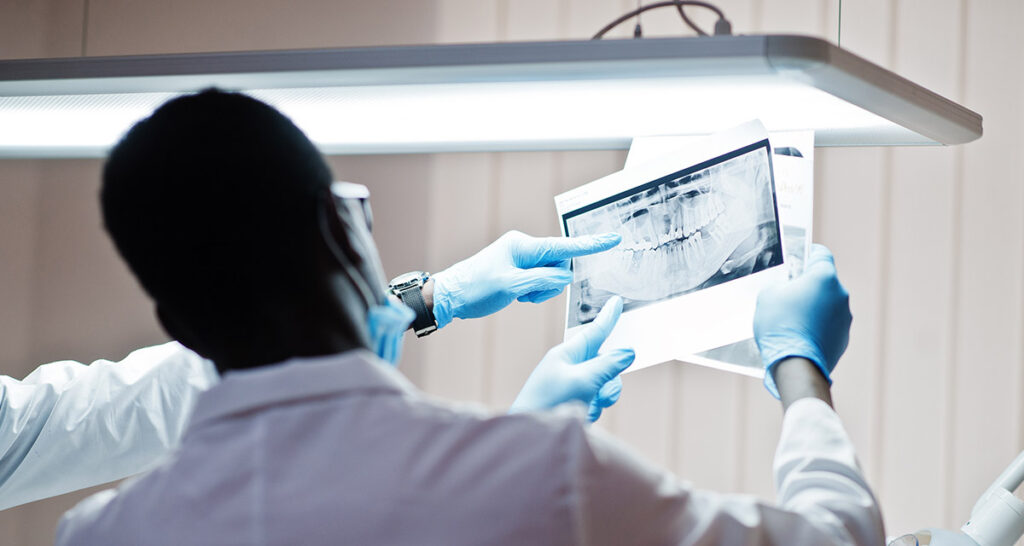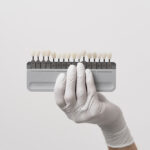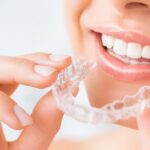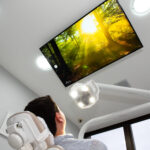What you will find in this article:
- What is digital scanning?
- How did molding evolve into the digital model?
- How does digital scanning work?
- What are the advantages of digital scanning in Dentistry?
- When to use digital scanning?
- Digital dentistry treatments in Rio de Janeiro
Digital scanning is the future of dentistry, making a difference in patient care. And it's no wonder, since it transforms their experience and provides special benefits to the dentist.
In this article, you will learn everything you need to know about digital scanning and impressions, understanding the impact of this technology on the day-to-day running of the clinic and on the patient experience. Let's do this together?
What is digital scanning?
This involves obtaining a digital model of the patient's dental arch, without the need for physical molds. To do this, an advanced technology intraoral digital scanner is used.
Since the development of the first digital scanner to facilitate the creation of impressions, engineers have invested in technology and created devices that are increasingly user-friendly and comfortable to use for both professionals and patients.
The intraoral scanner captures detailed three-dimensional (3D) images of the patient's mouth, eliminating the use of uncomfortable traditional molds.
With digital scanning, it is possible to create precise replicas of teeth, gums and other structures, quickly, efficiently and without causing discomfort to the patient. In addition, it is possible to monitor the progress of the treatment more easily.
Click here and read our article with 10 Tips to keep your teeth healthy and white.
How did molding evolve into the digital model?
The impression we know today, with elastomers and plaster models, began in 1937. The first elastomer created exclusively for use in Dentistry was Impregum, introduced by the company ESPE in 1965.
Because it has been used for decades, many dentists are resistant to the use of digital technology. After all, if physical impressions have been providing effective results for so many years, there is no need to change it. However, the fact that it is efficient does not mean that the method cannot be improved, for the benefit of both the patient and the dentist.
Following this idea, digital scanning was developed and introduced to the market in the 1980s. Today, one of the best-known systems is CAD/CAM (Computer Aided Design/Computer Aided Manufacture), which is capable of scanning the entire mouth in just a few seconds.
Furthermore, CAD/CAM can send all this digital scanning data to the production of restorations in ceramic or resin blocks. All this without the need for a physical copy in plaster.
There is also a dedicated three-dimensional (3D) digital scanning system. It eliminates several steps in the dental office because the final restorations are produced on models created from digital scan data, rather than on plaster models made from physical impressions.
How does digital scanning work?
The operation is very simple: the dentist uses a digital scanner to obtain images of the patient's dental arch. It can produce images that can be magnified up to 60 times. In addition, they are noise-free and distortion-free, which makes them much more precise.
The captured images are sent to software, which builds a 3D model of the patient's dental arch. Due to the quality of the photos, the model achieves a level of precision never before achieved.
Based on this high-quality digital scan, the professional will be able to create prosthetics and choose specific treatments for the patient. They can also predict results, in order to increase the patient's adherence to treatment.
All images are stored in the cloud, which prevents the possibility of loss. This information can be shared with other professionals, without having to forward molds and run the risk of damaging or losing them.
Do you know what Aesthetic Dentistry is? Click here and find out more!
What are the advantages of digital scanning in Dentistry?
There is a lot of talk about digital scanning having a positive impact on dental care. But what are the real advantages it offers? Below, you will discover the main ones and understand how this technology revolutionizes dental care:
1. Greater patient comfort
Widely used by dentists to this day, the traditional tray is an essential element of the dental routine, but it is also one of the most unpleasant and uncomfortable objects for the patient. In addition to being uncomfortable, it often causes nausea in more sensitive patients and leaves residues in the dental arch that are difficult to remove.
With digital scanning, you can avoid these problems. It obtains all the necessary images in less than a minute. No discomfort, no substances that are difficult to remove from the teeth, and no need to keep your mouth open for too long, which can contribute to nausea in more sensitive people.
2. Reduction in service time
Intraoral scanning technology makes it possible to reduce the time spent on consultations and procedures. The digital impression and creation of the 3D model are completed in just a few minutes, enabling faster diagnosis.
As you saw here, as soon as the prosthesis model is ready in the digital scan, the implant can be created instantly, with just one command to the milling machine.
Saving time is very important because it allows the dentist to perform more treatments without compromising the quality of the services. In addition, the patient spends less time in the office, which is a positive point, especially for those who have busy daily routines.
3. Saving resources and office space
With three-dimensional digital scanning, there is no longer a need to spend excessive amounts on plaster, resin and other substances for traditional moldings. Therefore, it is possible to make significant savings, reducing operating costs.
In addition, traditional molding requires space to store the physical models and all the material needed to remove the mold. By adopting digital technology, the dentist can optimize space, expanding the area of use. This detail is important, for example, for small offices, where it is necessary to make intelligent use of the available space.
4. Accuracy in diagnosis and treatment
By eliminating the conventional impression process, there is no need to worry about errors caused by the appearance of air bubbles, rupture of impression materials, displacement and movement of the tray, lack of materials, inadequate impression adhesive or distortion caused by disinfection.
Digital scanning does not require the placement of a tray between the upper and lower teeth, which significantly reduces the risk of an inadequate interocclusal relationship.
Scanning technology allows us to capture accurate images of teeth and dental arches, which provides precision in diagnosis and treatments, especially those involving the creation of prosthetics or orthodontics.
5. Sustainability
By using almost entirely digital resources, we have considerably reduced the use of toxic substances. This makes it possible to make care more sustainable.
There is also less waste generated, which significantly reduces the impact on the environment. Therefore, it is the best solution for practices and professionals who follow a sustainability-oriented approach.
6. Predictability and reduction of rework
The use of a digital scanner provides predictability in treatment. The integration of models with digital images obtained by tomography greatly facilitates the diagnosis and planning of more complex cases.
Furthermore, the need for rework is virtually non-existent, as everything is done on an almost identical copy of every detail of the patient's dental arch. This saves time and resources.
7. Advanced aesthetics and natural results
One of the problems caused by physical molding is that the professional could not, for example, base his or her work on the color of the patient's teeth when creating prosthetics. As a result, much of the beauty of the prosthesis was lost.
With digital scanning, we have color details of the entire dental arch. This makes it possible to achieve a result beyond what is desired, while maintaining a natural look. This way, it is possible to achieve patient satisfaction.
8. Secure storage of images and treatment information
The use of technology in dentistry allows the secure digital storage of images and information about the treatment. This is a differentiator because it significantly reduces the risk of loss.
Furthermore, digital storage, usually done in the cloud, makes it easier to share patient information with other dentists and dental professionals, speeding up stages of care and treatment.
When to use digital scanning?
Intraoral scanner technology can be used at various times during dental care and treatment. In general, it is recommended for use whenever there is a need to obtain detailed images of the patient's mouth, as well as in the case of impressions.
Therefore, the scanner is normally used in patient diagnosis and in treatment planning, such as orthodontics or dental prosthetics. The technology is also an ally in planning the placement of dental implants, establishing the exact positioning of the pins.
Furthermore, scanning allows for treatment monitoring, allowing changes to be tracked and adjustments to the treatment plan to be made accurately.
In all cases, digital scanning creates detailed records of the patient's mouth and oral health. This makes it easier to compare the progress of treatments and make it clear to the patient.
Digital dentistry treatments in Rio de Janeiro
Here in Odonto Liuzzi, clinic of dentistry in Rio de Janeiro, we bring this new concept, combining comfort, technology, advanced techniques and a qualified team, offering patients excellence in dental treatments. Do you want to count on these differentials? Then, contact us and schedule your appointment!
Stay up to date with news and tips on oral health and dental aesthetics, just like our pages on Instagram It is Facebook.
Finally, how about sharing this article with your friends on social media? This way, they can solve the same doubt you had just a few minutes ago!
Read too:











 per
per